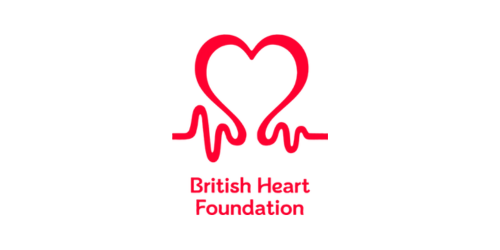Is team building an art or a science?
When it comes to assembling, motivating and keeping a great team happy so that they can flourish in your business, the truth is that it’s a bit of both.
It cannot be understated how important a great team is to a business’ success. The quality of the work you do will never exceed the quality of the team behind it. To many entrepreneur’s and manager’s dismay, team building often seems as complicated as watchmaking—there are a lot of moving parts, and things have to be just right in order to create something magical.
Fortunately, academic research on team culture and group dynamics sheds some much needed light on creating and motivating the perfect team.
1. Team-Building Exercises Can Work
Building a great team and actual “team building” exercises are often viewed in very different lights.
Team building is one of those business topics that will evoke a few eye rolls. The first thing that comes to mind for many are those superficial activities that force people together into some sort of awkward scenario, with all of the participants hating the process and wishing it would end.
Team building shouldn’t have this sort of reputation.
The Small Group Research journal paper “Does Team Building Work?” analyzed data from 103 studies conducted between 1950 and 2007. This cumulative research provides the strongest scientific evidence to date that team building can have measurable, positive effects on team performance.
As you’ll soon see, the “secret” in making team building work is to keep things normal, and to avoid situations that are too revealing or uncomfortable for particpants. Keep it light and fun. Create positive shared memories and not fears. Do NOT assemble your team and ask everyone to share their greatest fear—a huge majority of the people involved won’t appreciate this forced mix of their work life and personal feelings.
In fact, getting together and creating something brings people together like nothing else. The Rock & Roll Experience provides the perfect vehicle for people to make music together and feel a sense of achievement outside of work, whilst also having a great time.
If you judge a fish by its ability to climb a tree, it’ll spend its whole life believing that it is stupid.”
Albert Einstein
2. The Best Teams Have Extroverts and Introverts
Many companies actively encourage their employees to open up and be more extroverted. But be careful of this mentality; even though introverts don’t tend to make as strong of a first impression as extroverts, they have proven to be key members of teams.
Research shows that although introverts “start off with the lowest status” (i.e., their peers didn’t evaluate them as having much influence), as time progressed their status climbed whereas the extraverts’ status fell.
These underrated quiet types offer a unique way to balance a team, so be sure that any ‘wallflowers’ on your team are given a chance; their reserved nature may just mean that they are shy, not that they have nothing to contribute.
The Rock & Roll Experience actually caters for introverts and extroverts, allowing the bold types to get to the front of the stage and grab a microphone, whilst those less ready to shine in front of an audience can play a larger part in the branding, naming, styling of the band, as well as contributing musically with a small (but equally important) extra percussion part.
3. Forming “Micro-Cultures” Can Be Bad for Teams
Varying degrees of friendship are bound to form within teams. Research shows that it’s common for closer bonds to be formed among team members who share similarities based on their social identity and by the department they work in (e.g., marketing, support, product, etc.).
In a psychological study on getting the most out of multidisciplinary teams, lead researcher Doris Fay found that multidisciplinary teams produced better quality innovations than more uniform teams, but that this boost in performance was only consistent if there wasn’t a problem of teams fracturing into smaller subgroups.
Team leaders need to ensure that each member feels committed to the unified cause and that everyone on the team has a voice.
While private friendships are obviously fine, office cliques and inter-departmental rivalries aren’t ideal for a positive, goal-minded environment.
Rock & Roll Experience allows the groups to be split any which way, so that certain departments can be grouped together, or split up so that the whole company structure could get to know one another more intimately.
4. Star Performers are Often Dependent on Their Team
Your rockstar employee that seems to thrive off of natural talent may be more dependent on their team than you think.
A Harvard study published in 2006 revealed that the overall performance of heart surgeons improved over time (patient mortality was the outcome measured) when they were able to consistently work with their usual team at the primary hospital they performed in.
When the surgeons would cover for other doctors, the researchers found that this measured improvement didn’t translate to other familiar hospitals with unfamiliar personnel.
So even though these surgeons were well acquainted with the other hospitals (thereby sidelining worries about feeling confused or “out of place”), they didn’t have the same tacit understanding of their team members. As a result, they did not perform at the same level as they did at their primary hospital with their primary team.
This finding is very important for both employees and employers to consider when evaluating how a particular team is contributing to their rockstar’s consistency.
And what better way to demonstrate this point than through the musical stage? The lead guitarist is impotent without a drummer, keyboardist, singers, etc to back him up. A key part of the Rock & Roll Experience is demonstrating the importance of each member in the band, and how no single member can shine without his band mates backing him up; An important lesson to take back to the office.
5. Great Teams Need Non-work Communication
A study from MIT’s Human Dynamics Laboratory shows that when it comes to predicting the success of a great team, the most important element is how well the team communicates during informal meetings:
With remarkable consistency, the data confirmed that communication indeed plays a critical role in building successful teams. In fact, we’ve found patterns of communication to be the most important predictor of a team’s success.”
This doesn’t mean team members have to be best friends outside of work, but managers should recognize that non-work discussions are critical to creating a team that looks out for each other. Otherwise, co-workers may begin to view one another as just cogs in the machine.
Spending time together outside of work is key to this, and creating music, talking about our favourite bands and singers from our childhood up until today, and then having a ball trying to emulate them does this perfectly.
Contact us to learn how we can help optimise your team’s success today.










































